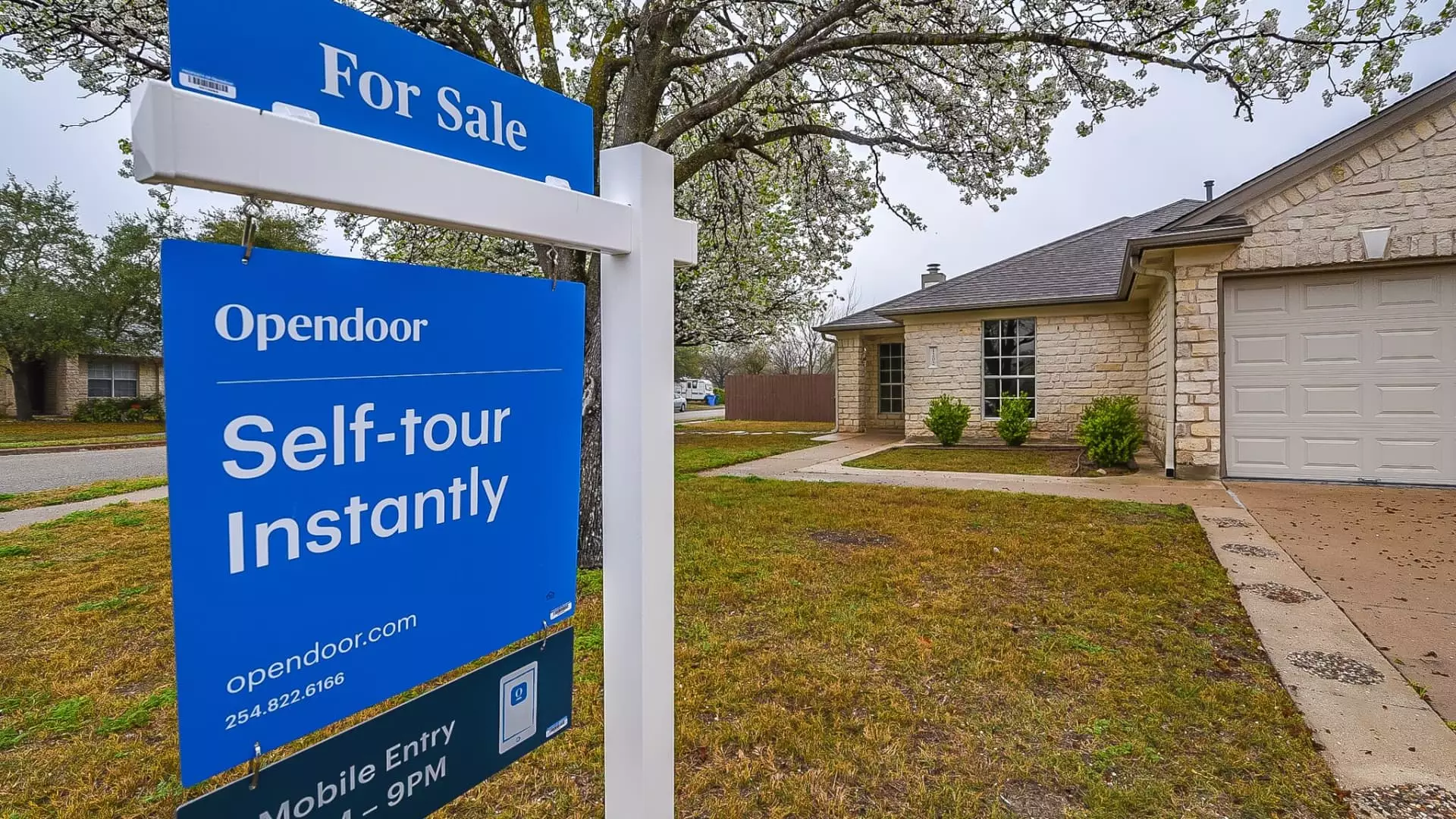Opendoor’s recent stock rally, surging nearly fivefold since July, initially seemed like a promising sign for a company plagued by years of underperformance and financial instability. However, beneath this apparent rebound lies a fragile foundation. The abrupt swings in investor sentiment—marked by record trading volumes and sharp after-hours declines—highlight the underlying volatility and the risks that remain unresolved. Such wild market movements suggest that investor confidence remains precariously balanced, driven more by speculation and short-term optimism than by tangible fundamentals. Rather than signaling a sustainable turnaround, this volatility raises the question: is Opendoor simply riding an ephemeral wave fueled by hype, or is it genuinely poised for a meaningful revival?
Judging the Business Model Amidst Turmoil
At its core, Opendoor’s business model—leveraging technology to buy and sell homes—should provide it with a competitive edge in the digital transformation of real estate. Yet, the economic environment has been unforgiving. Rising interest rates since 2022 have throttled demand for housing, causing revenue to plummet from over $15 billion to just over $5 billion last year. The decline wasn’t merely cyclical; it laid bare structural vulnerabilities. The company’s heavy reliance on the “iBuying” model, which involves quick home flipping in a volatile market, leaves it exposed to fluctuations in housing prices and borrowing costs. The recent attempt to shift towards a less capital-intensive referral-based model appears promising, but whether it can compensate for fundamental issues remains uncertain. Strategic pivots are no guarantee if market conditions continue to sour or if execution falters under pressure.
Financial Health and Investor Perceptions
Despite a slight improvement in quarterly revenues and narrowing losses, the gaps are still vast. The second-quarter revenue increased by a modest 4%, and net losses shrank significantly, yet the forecast of sub-$900 million revenue in the upcoming quarter signals ongoing struggles. The company’s decision to scrap a planned reverse split—once deemed necessary to maintain Nasdaq listing—was a small victory but hardly indicative of a resilient turnaround. Hedge fund manager Eric Jackson’s bullish stance, citing a potential stock price of $82, seems disconnected from current reality, especially as the stock remains below $2 in after-hours trading. This disconnect underscores the dissonance between speculative enthusiasm and actual business fundamentals. Investors chasing tailwinds of hype risk missing the bigger picture: without tangible growth in earnings and a stabilized balance sheet, the rally may prove fleeting.
The Political Spectrum and Market Responsibility
From a center-right perspective, the rise and fall of Opendoor exemplify the pitfalls of unchecked speculation and the importance of market discipline. While innovation should be encouraged, it must be tempered with prudent regulation and responsible investment. The company’s transition from a high-flying SPAC darling to a cautious pivot toward sustainability offers a lesson in the importance of resilience over hype. Governments and regulators should maintain vigilance, ensuring that valuation surges are rooted in real economic potential rather than short-term market manipulation. Investors also bear responsibility: chasing speculative assets based solely on optimistic chatter can distort markets and harm the broader economy. Ensuring transparency and accountability is essential, but so is exercising critical judgment and skepticism—traits that seem increasingly absent from the current obsession with rapid gains in stocks like Opendoor.
While the recent surge in Opendoor’s stock appears promising at first glance, a deeper analysis reveals a landscape fraught with risks and uncertainties. The company’s fundamental challenges—weak demand due to high mortgage rates, heavy reliance on volatile markets, and a tentative strategic shift—remain unresolved. The euphoria driven by hedge fund backing and market momentum risks obscuring the reality: without sustained revenue growth, profitability, and a clear route to stability, the so-called rebound could indeed be an illusion. Investors, policymakers, and the company itself should approach this “recovery” with cautious skepticism, recognizing that true progress requires more than catchy headlines and fleeting market spikes. In the end, stability and sound fundamentals should be paramount, not fleeting hype.

